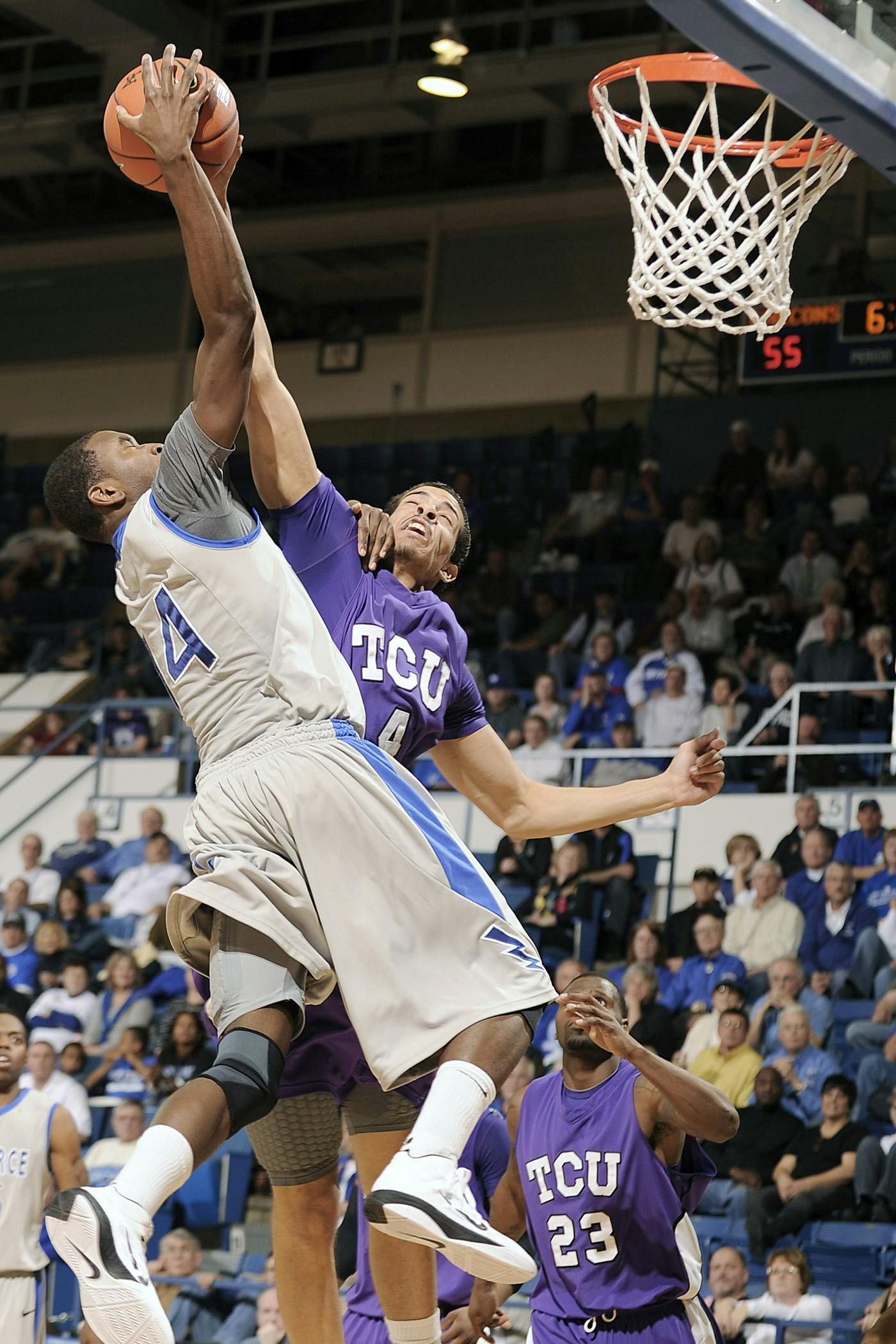Have a game plan for March Madness?
by Jon Lober | NOC Technology
The madness is coming—can your staff handle it?
Whether you're closely following expert picks or find yourself cheering a vague "go sports," with Selection Sunday just a few weeks away, it's time to make a plan for March Madness. Because the tournament will be played during work hours on March 20– 21, and 27–28, odds are, your staff will be dying to watch. Regardless of whether you love or hate the tournament, March Madness will definitely impact the productivity of your employees—and not just those that are interested in watching.
Your response to this challenge will depend on your company’s culture and the type of work that employees do on a daily basis. [Learn more about what makes NOC tick if you're interested.] It also may depend on your network capacity and cybersecurity preparedness. So let's dive in!

While many companies lean into March Madness as a team-building opportunity for a little healthy competition, others are rightfully concerned about the loss of productivity—and some just try to ignore it as much as possible. Each is a valid option depending on the nature of your business. We can't tell you which response to choose, but we can offer you some tools to address the interruption to business as usual.
1. Decide on a policy
While there are several options at play here, the most important thing for any business is to
make a clear decision that can be easily communicated and fairly enforced.
Option 1: Go on defense
Limit or block viewing the games in the interest of productivity
Those that decide to block or at least limit access to March Madness during work hours might cite the $17.3B in estimated productivity losses related to the 2024 tournament. Many employers can't even imagine being able to afford allowing their operations to shut down for half of four working days during the tournament.
Beyond that basic—and understandable—economic concern, did you know that March Madness can also represent a serious security risk?
Cybercriminals know that many people are desperate to watch games or win bracket pools. As a result, hackers may target your employees with phishing links that promise either safe, free streaming or big payouts—but instead direct them to compromised sites where they can steal their personal information and login credentials.
Finally, while the NCAAM tournament
can
provide a great boost to office morale, it can also unintentionally
exclude your team members who hate basketball or who feel too uncomfortable participating during work hours.
Allowing viewing of the tournament at the office also sets a precedent for streaming videos at work. What if some of your employees want to watch baseball? or soccer tournaments? or the Olympics? Those events can also occur during work hours, and employers that allow streaming of sports might find themselves in an ongoing situation of constantly approving or disapproving different events.
Option 2: Go on offense
Permit or encourage viewing in the name of team building
In contrast to a restrictive policy, some managers opt for policies that permit or even encourage their team to watch the tournament during work hours. If your staff includes both WFH and in-office employees, those at home can turn the TV on in the background, while those in the office cannot. Since 20% or more of American workers report that they are willing to call in sick to watch the games—and over of Americans half admit to watching at work anyway—many managers have decided to take a realistic approach and make the best of a disruptive situation.
Beyond these somewhat cynical reasons to simply permit viewing, some proactive managers recognize the possibilities of unifying their teams by actively encouraging viewing. For many companies, March Madness has become a company-wide tradition that brings together people from different departments. Although it might have a short-term negative impact on output and productivity, the investment in goodwill and employee well-being can have long-term payoffs.
2. Communicate your policy
Managers should start communicating their chosen policy at the beginning of March regardless of the approach: block, restrict, permit, or encourage. The policy should take pre-existing internet usage policies into consideration. For example, if March Madness is to be a standalone exception to a policy that prohibits personal viewing while at work, managers should explicitly recognize this in writing in order to prevent any future confusion.
Don't have an internet usage policy?
Schedule time with one of our IT experts today.
3. Implement policy solutions
With your policy in hand, let's look at a few options available to employers who either choose to get in on the tournament fun or who restrict it altogether.
Options to Restrict or Block Viewing
- Restrict Bandwidth: This option allows interested employees to watch as they wish without bogging down internet performance for the rest of your office. Your IT team can limit the total bandwidth allowed for video streaming to 10% or 20%, ensuring smooth internet functionality for the rest of the office.
- Block Viewing: If your office determines that March Madness represents too much of a productivity and cybersecurity risk, your IT team can use the following three steps to completely block viewing of the tournament on your network. Keep in mind, however, that this will not prevent employees from watching the games on personal devices using cellular data, and will restrict all video streaming during the four workdays of tournament action.
- Prohibit VPN services.
- Block video streaming at the DNS level.
- Block video streaming at the firewall.
Options to Safely Permit or Encourage Viewing
- Provide a safe list of sites for streaming: Allow employees to watch games only when they are streamed from the sites of major streaming services or broadcast networks.
- Set up a “watch room”: In order to limit the amount of bandwidth consumed by multiple devices streaming simultaneously, set up a designated area in the office that will minimize disturbance to other employees. Spaces like conference rooms, breakrooms, and lounges that allow employees to work on their laptops while watching the games often work well. If you have a large contingent of virtual workers, you can set up a virtual watch room that allows those employees to watch a common screen and interact with one another as well.
- Be considerate of “non-watching” employees: Limit the noise and disruption caused by those watching the games and be willing to shut the party down if things get overly disruptive. Think of a couple of ways that you can let “non-watchers” know that you appreciate them as well. Consider catering a couple of lunches on major game days and invite the entire staff. Remember, not everyone is interested in sports, but pretty much everyone loves free food.
How does NOC handle March Madness?
We're real people too, and a large portion of our staff loves March Madness. To break up the daily grind, we use the tournament season as a time to try to reduce stress around the office.
To accommodate and promote team-building among those who want to watch the games, we set up two viewing areas. Our office’s “bullpen” where many employees work has a wall covered in eight large screens that we typically use as dashboards to display current statistics and performance. During March Madness, we dedicate two of those screens to the games. We also keep a TV on in the break room with popular games as well. Our staff does not have a tendency to cheer for any one team, but everyone stays civil and has a good time watching the games together.
While we do not go beyond these simple steps to manage the madness, we do see tournament season as an opportunity to relax and interact with one another.
Our approach to March Madness is an extension of an ongoing effort to create a safe, productive culture that knows how to work hard while being able to relax from time to time. This applies to March Madness as well as the World Cup soccer tournament or other cultural events that we feel can help the office de-stress and come together.
We have found that this approach works well for our office. It accomplishes our goals of team-building, de-stressing, safe viewing, and avoiding an unnecessary burden on our system. We hope that you can identify and implement the approach that works best for your team as well, be it to block, restrict, permit, or encourage viewing.
If you want to talk about anything from network concerns to management styles, get in touch today.




